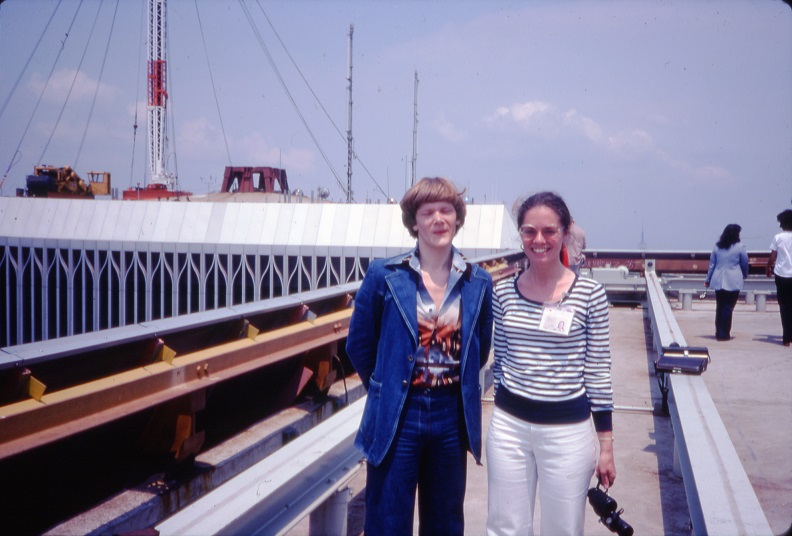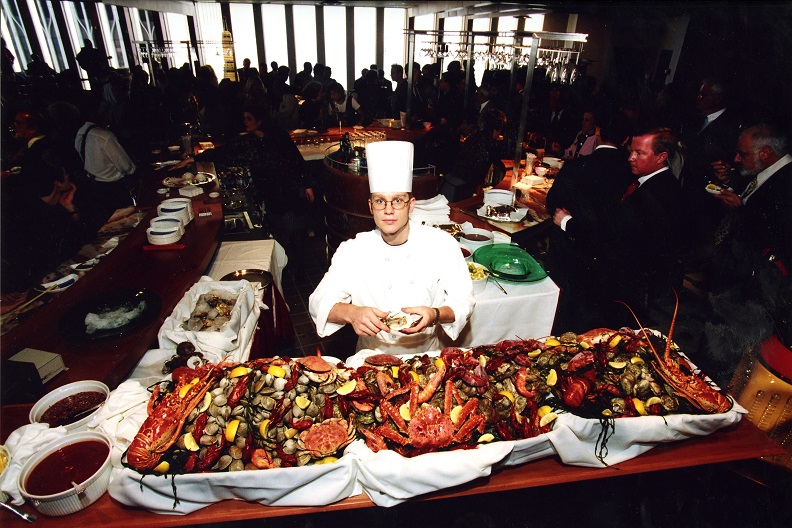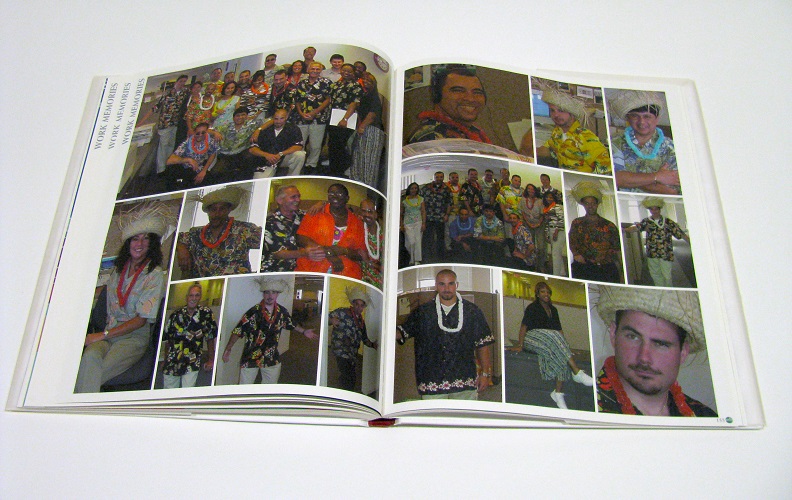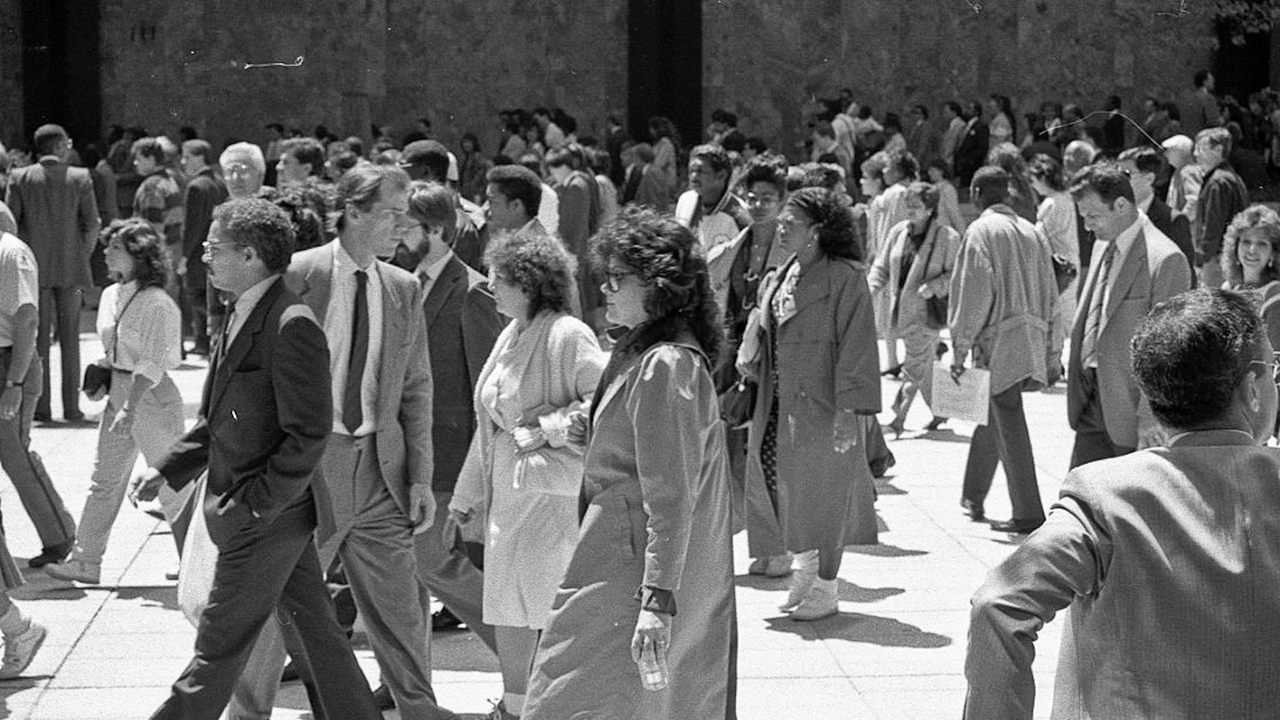Make a donation to the museum
Snapshots of Work Life
The World Trade Center complex was home to more than 430 companies from 28 different countries. Its listing of tenants, a who’s who of the international finance and trading community, as well as the concentration of thousands of people at the site, made it vulnerable to terrorist attacks.
A Metropolitan Hub Visited by Thousands
Located on top of the third largest transportation interchange in Manhattan and the largest indoor shopping area in lower Manhattan, the World Trade Center complex was a metropolitan hub visited by thousands of people every day. Many came to work at the World Trade Center in a range of professional fields, most notably banking, finance, insurance, law, manufacturing, trade, and government. Others passed through the complex during their daily commutes. World Trade Center workers, commuters, tourists, and neighborhood residents also used the mall to purchase anything from a newspaper to luxury goods, fill a prescription, enjoy a meal, get a key copied, or make a financial transaction.
The 9/11 Memorial Museum documents the stories of those who visited and worked at the original World Trade Center by acquiring objects, archival footage, photographs, and oral histories that speak to their experiences. These stories describe everyday activities that took place at the World Trade Center and chronicle a place that was intrinsically connected to New York City and residents of the metropolitan area. It is through these stories that we understand how inconceivable the 9/11 attacks were at the time they occurred and why the World Trade Center was a target for extremists, not just once but twice: it was a place of constant human activity where a terrorist attack would disrupt daily life, spread fear, and deliver a devastating number of casualties on U.S. soil.

Photograph of World Trade Center worker Rae Ann Hoffmann (right) with Philippe Petit, French high-wire walker, on the roof of the South Tower, circa late 1970s. Collection 9/11 Memorial Museum, Gift of Rae Ann Hoffmann.
Promoting the World Trade Center
The World Trade Center was the corporate home of the Port Authority of New York and New Jersey, which built, owned, and operated the complex. The agency’s offices were headquartered in the North Tower, serving as a base of operations for an estimated 1,400 employees. One of those employees was Rae Ann Hoffmann, the general manager of marketing communications for the Port Authority. She began working for the bistate agency in 1973 as a management trainee and continued in various roles and departments until her retirement in 2010.
As general manager, Hoffmann’s main task was to promote the World Trade Center and its seasonal events, concerts, restaurants, shops, and famous observation deck through the production of advertisements, guidebooks, and other publicity materials. While some were crafted to attract tourists and locals, others targeted potential and current World Trade Center tenants. These items included annual holiday cards, coupon books for discounted dining, and promotional souvenirs like an inflatable shopping bag advertising The Mall at the World Trade Center―the shopping and dining area that occupied nearly 430,000 square feet of retail space and had more than 75 retailers on the Plaza and concourse levels.
Following the February 26, 1993 bombing at the World Trade Center, a crew of 2,700 worked around the clock to clean, repair, and prepare the Twin Towers for reopening. Hoffmann focused attention and resources on restoring the reputation of the World Trade Center as a cultural and consumer destination for tourists and locals, while also working to ensure that current tenants felt safe and supported as they returned to their offices. The South Tower reopened in March 1993, and the North Tower reopened in April. To welcome back tenants, the Port Authority distributed food, souvenir coffee mugs, and coupons that could be used for attractions, services, and shopping at the World Trade Center. Hoffmann’s efforts on behalf of the Port Authority helped make the World Trade Center a hub that attracted tens of thousands of people every day.

World Trade Center Summit Security Services blazer. Collection 9/11 Memorial Museum, Gift of Mary Santos, Photograph by Jin S. Lee.
Protecting the World Trade Center
After the 1993 bombing, the Port Authority took action to strengthen security at the World Trade Center. At a cost of 50 million dollars, these security improvements transformed the complex by restricting public access to the buildings. New measures included closing the garage to public parking, installing bollards and multi-ton planters around the periphery of the building, and updating employee and visitor identification cards with electronic coding. While the outdoor and belowground shopping mall remained publicly accessible, the overall presence of security guards increased.
In 1996, the Port Authority brought on Summit Security Services, Inc. as its primary contract security provider. In 2000, security professional Mary Santos was hired by Summit Security to work onsite as a Perimeter Guard at the South Tower. This role brought Santos into daily proximity with the Twin Towers, their occupants, and visitors. She was proud of her association with the world-famous landmarks and quickly took to her new working environment—becoming acquainted with regular tenants and assisting tourists arriving to ride the elevator to the South Tower Observation Deck. Her primary duties included keeping the fire lane clear of unauthorized vehicles, preventing panhandlers and hawkers from crowding the Plaza, and conducting routine checks of the planters and dumpsters. Protecting the Twin Towers brought Santos into the often-overlooked nooks and crannies of the complex, such as the basement truck receiving docks, the sub-basement engine rooms, and the VIP reception area at Windows on the World in the North Tower.
Security measures implemented after 1993, and the vigilance of security staff, made it increasingly difficult for unauthorized persons or vehicles to gain access to the complex. For security professionals like Santos, protecting the towers meant focusing on the street-level and belowground points of entry, never imagining that a threat could come from above. In memory of the 11 Summit Security employees who died on 9/11, Santos donated to the Museum her World Trade Center Summit Security uniform blazer—a tangible reminder of the working culture built and sustained by those who protected the Twin Towers every day.

Lower Manhattan business Gotham Seafood catered a banquet at Windows on the World to celebrate the restaurant complex’s reopening on June 27, 1996, which followed a three-year closure resulting from the 1993 bombing.
Collection 9/11 Memorial Museum, Gift of John McGuire.
Catering Special Events at the World Trade Center
Located a quarter of a mile in the sky, Windows on the World was a complex of restaurants, lounges, bars, and private rooms on the 106th and 107th floors of the North Tower that opened on April 19, 1976. In its first year of operation, Gladys Mouton DiStefano was hired as the Director of Catering. For roughly 17 years, DiStefano and her team planned, catered, and coordinated special events throughout the Twin Towers, serving royalty, political leaders, celebrities, and corporate executives from every corner of the globe.
The original establishments at the top of the North Tower included the main restaurant of Windows on the World, the Hors d’Oeuvrerie that was later replaced by the Greatest Bar on Earth in 1996, and Cellar in the Sky that was later replaced by Wild Blue in 1999. Combined, these venues had a seating capacity of roughly 450 people. The complex also housed suites and other rooms for private functions and banquets, such as the ballrooms on the 106th floor and the west-facing Hudson River Suites on the 107th, which could be modified to the party size. Each year, Windows on the World booked roughly 100 private parties for up to 100 people, about 40 parties for groups of 400 people, and a few large-scale events reaching more than 800 people. Known as a special occasion restaurant, private bookings at Windows on the World were commonly bar and bat mitzvahs, milestone birthdays, anniversaries, and weddings. During her tenure at Windows on the World, DiStefano catered numerous wedding ceremonies. Witnessing firsthand the unique experience and breathtaking views the venue offered guests, she decided to celebrate her own wedding in one of the ballrooms on the 106th floor of the North Tower on November 30, 1985.
On many occasions, DiStefano and her team coordinated events away from the Windows on the World complex. To celebrate the 100th anniversary of the Statue of Liberty, DiStefano organized an event at the South Tower Observation Deck where party-goers were invited to walk around and sample local fare from iconic New York City neighborhoods. DiStefano and her team also planned functions across the World Trade Center’s more than 20 eateries, such as the Big Kitchen, which was located on the concourse level. While always busy with social bookings on the weekends, the catering staff’s principal workload was dominated by conferences and other workplace functions at Windows on the World.
Such elaborate events would not have been possible without a large and supportive community of food service workers and restaurant professionals who prepared, served, cooked, cleaned, devised menus and wine lists, and coordinated logistics. Their work, and the efforts of countless other kitchen and hospitality staff, secured Windows on the World’s moniker as the “Most Spectacular Restaurant in the World.”

Memorial book, titled A Celebration of Life, by Carr Futures. Collection 9/11 Memorial Museum, Gift of anonymous.
Corporate Culture the World Trade Center
Viewed as a symbol of global capital and commerce, the World Trade Center was a hub for finance and brokerage companies. One of these companies, Carr Futures, a brokerage firm with 140 employees, occupied the 92nd floor of the North Tower. Tricia Collins, first hired as a credit analyst, brought her video camera to work on September 29, 2000. She wanted to capture the panoramic views of Manhattan and daily office life so her grandparents could see where she worked and meet her coworkers.
A novice to the finance world, having previously worked in the music industry, Collins was immediately drawn to the polished corporate atmosphere of the towers. Amongst the stunning views in her video, Collins also captured brief interactions and banter between coworkers and friends. Collins was nicknamed the Cruise Director for her deftness at rallying her colleagues for outings. On the Fourth of July, Collins and her Carr Futures teammates gathered in an undeveloped portion of the office to watch fireworks and celebrate the holiday together.
In the wake of the September 11 attacks, Collins and her colleagues spent two and a half years gathering photographs, speaking with family members, and writing stories to create a memorial book, A Celebration of Life. It was distributed to the relatives of the 69 Carr Futures employees killed as a result of the 9/11 attacks.
